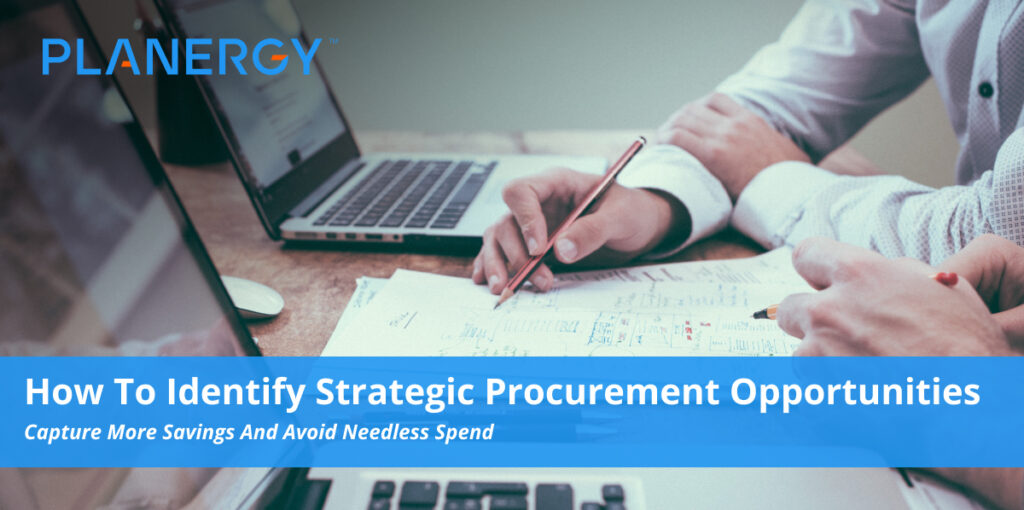For much of its history, the procurement function has been viewed as a cost center or, at best, a source of short-term savings through price-focused sourcing.
That was, however, before digital transformation became a major priority for businesses looking to secure competitive advantage in a global economy rich in opportunities but fraught with unprecedented challenges.
Today, organizations are taking a much closer look at procurement as a potential source of value creation, with powerful potential to guide their strategic decision-making and provide substantial savings through process optimization and pursuing strategic procurement opportunities.
Review the procurement strategies of leading companies like Walmart, Apple, Amazon, and other’s to see how procurement strategies can play a key role in the success of a company.
By shifting procurement into the strategic space, and developing procurement strategies that align with and support organizational goals, these organizations are capturing greater savings and centering value-driven procurement as the core of their overall business process management.
Strategic Procurement Opportunities: Moving Beyond the Tactical
In discussing the evolution of modern sourcing processes, it’s important to understand two related but distinct approaches used by procurement teams: tactical procurement and strategic procurement.
Both are used in sourcing goods and services, developing, maintaining, and improving supplier relationships, and meeting stakeholder expectations. However, the two approaches have very different impacts on, and roles within, the organizations using them.
Tactical procurement, also called tactical sourcing, is the traditional approach. It is defined by:
- A short-term, reactive approach focused on immediate gains via cost management and lowest possible purchase price.
- Prioritizing lowest possible cost for goods and services without contextual consideration of supply chain risk management, supplier relationship development, supply chain resilience, business continuity planning, etc.
- Minimal interactions with suppliers and low priority given to developing long-term, potentially valuable relationships.
- Minimal investment in process optimization, data management, and spend analysis tools, as support for organizational goals and strategy is incidental beyond pricing-based cost savings.
By comparison, strategic procurement, also called strategic sourcing, is a much more robust, complex, and resource-intense process (albeit one that yields commensurate rewards).
- Take a comprehensive, long-term, and iterative, rather than incidental, approach designed to contextualize procurement within the larger organization. The tighter this alignment is, the greater the cost savings and value creation will be.
- Identify the ways in which sourcing processes and procurement strategies can support business-wide goals for growth, innovation, strategic planning, and competitive advantage, and optimize them accordingly.
- Prioritize the lowest possible total cost of ownership (TCO) balanced against lowest acceptable risk in the supply chain. Cost savings are also very important (and, in fact, will often be greater than they would be under a tactical approach), but are rightly considered as only part of the larger potential value created through process improvement, data analysis, and risk reduction.
- Develop and maintain strong, collaborative partnerships with suppliers—particularly key suppliers—designed to foster shared success and build end-to-end value into their supply chains. Sharing business intelligence and aligning organizational goals with key suppliers creates a sense of shared purpose and makes it possible to maximize value creation while minimizing risk exposure.
- Perform rigorous and continuous evaluation of every stage of the entire procure-to-pay process (P2P process) to identify new opportunities for improvement and discover new ways to meet and exceed stakeholder expectations. This includes the use of key performance indicators (KPIs) in evaluating internal processes as well as vendor compliance and performance.
- Invest in the digital transformation and data management tools required for long-term, collaborative, and insight-driven procurement process development and optimization.
As the world continues to recover from the COVID-19 coronavirus pandemic and faces a bevy of new potential disruptors, the importance of a truly strategic sourcing approach is becoming clearer every day.
Taking Advantage of Strategic Procurement Opportunities in Your Company
As the world continues to recover from the COVID-19 coronavirus pandemic and faces a bevy of new potential disruptors.
The importance of a truly strategic sourcing approach is becoming clearer every day.
In a volatile business environment where digital disruption and threats to business continuity must be balanced with new ways of doing business (e.g., shifting to virtual workplaces, remote teams, and socially distanced interactions with customers who expect the same or even greater levels of service and satisfaction as their pre-pandemic counterparts), a well-developed strategic sourcing plan might be your best defense.
The “perfect” strategic sourcing strategy will vary based on your individual needs, capabilities, and goals.
For example, some companies may simplify through the use of single-source procurement for part or all of their spend categories, leveraging the best-in-class capabilities of others to generate value and savings.
Some companies may take things a bit further and outsource their procurement entirely with a vendor who is deeply integrated with their own systems.
Others will centralize and optimize their procurement with help from comprehensive procurement software such as PLANERGY, centering procurement in their datasphere as a source of strategic value for not only sourcing, but all business processes.
Still other companies may make the shift in stages, starting with a single optimization (such as the P2P process or AP department) and building on the gains created to help procurement achieve strategic importance over time.
Other purchasing strategies, such as sustainable procurement and ethical procurement, will likely play a supporting role in your overall sourcing strategy, as informed by leadership from your chief procurement officer (CPO), your team’s particular goals, and the expectations of your stakeholders.
No two companies will take quite the same approach, but every business can introduce more strategic procurement—and reap the benefits—by reviewing their existing spend, their current procurement workflows, and the role the procurement team currently plays in their organization.
1. Identify Your Current Capabilities and Needs
Before you can craft a killer sourcing strategy, you need to understand what your company excels at, what it struggles to accomplish, and what it needs to take procurement out of the tactical space and into a more strategic role.
Research is critical at this stage. Working with the CPO and other senior management, the procurement team should identify the organization’s goals for the next three to five years, as informed by intelligence from their industry, analysis of the supply market, and any current and future potential disruptors in the supply chain.
Needs analysis should include a thorough review of internal processes and workflows, as well as the changes necessary to optimize them for strategic sourcing and bring them into line with organizational goals. It should also include considerations of corporate culture, and any change management efforts that might be required to secure total buy-in from stakeholders at all levels.
2. Create a Sourcing Team
While it’s not quite on the level of assembling the Avengers, building a strategic sourcing team does require a blend of talented and skilled individuals who can collaborate effectively.
Subject matter experts in finance, operations, procurement, marketing, and communications can work together to create a comprehensive sourcing strategy that considers your business as a whole.
They can connect with suppliers more effectively, provide a more nuanced approach to potential partnerships, and identify ways in which procurement workflows, supplier selection, category management, spend analysis, etc. can be refined to produce the lowest possible risk and TCO with the greatest possible long-term soft and hard value.
3. Ensure Your Procurement Strategy Aligns with Your Organizational Goals
Once you have a strategic procurement sourcing team assembled, they can begin to flesh out your overall procurement strategy to ensure it:
- Incorporates sub-strategies relevant to larger organizational goals. For example, some companies might integrate environmentally friendly, sustainable procurement not only to meet regulatory requirements and stakeholder expectations, but to build value through improved reputation and competitive advantage gained from sustainable sourcing that is more cost-effective over time.
- Incorporates intelligent category management and the use of spend profiles (e.g., direct and indirect spend, domestic spend and international spend, seasonal vs. year-round spend, etc.). Categorization is essential to identifying business-critical spend, as well as potential opportunities to improve both resilience and business continuity by cultivating relationships with suppliers who can be activated based on specific contingencies.
- Clearly spells out all timelines, benchmarks, and goals for each business unit in achieving strategic sourcing for the categories defined by your team.
- Has well-developed metrics (including KPIs) to set benchmarks for internal (e.g., P2P efficiency) and external processes (e.g. vendor compliance). These metrics will be used to evaluate and improve performance over time.
- Establishes collaboration and communication protocols to prioritize clarity and comprehension to help contextualize strategic procurement’s role for all stakeholders—and underscore the importance of their compliance with the system.
- Is supported by the necessary digital tools required to effectively execute process improvement and data management within more complex processes such as workflow optimization, supplier relationship management, and spend analysis and planning. A comprehensive software solution—such as PLANERGY—that includes process automation, centralized data access and management, and powerful modular tools for category management, supplier relationship management, and financial reporting and planning will prove invaluable in developing and executing truly strategic procurement processes over time.
4. Analyze the Supplier Market
Armed with a spend strategy and a clear understanding of spend categories, the team can turn its attention to your current supply chain.
Analyzing your vendor list and breaking suppliers out by category, market share, risk profile, etc. will help your team streamline your supply chain by cutting underperformers—and address any existing insufficiencies that may require the addition of fresh blood to your vendor list.
5. Identify Selection Criteria and Solicit Requests for Proposals (RFPs)
The team’s research can provide guidance in establishing the criteria suppliers must meet if they’re to meet your procurement needs and support your organizational goals.
When soliciting requests for proposals (or requests for information (RFIs), requests for quotes (RFQs), etc.), the team should provide crystal-clear information on vendor requirements, the expectations and obligations imposed upon them. This will help filter out vendors who don’t fit your needs and simplify the selection process.
6. Awards and Onboarding
Ideally, suppliers chosen for your new strategic sourcing-based supply chain will provide optimal quality, performance, and pricing while generating the lowest possible risk.
Connecting vendor systems directly to yours during onboarding through the use of vendor portals and punch-out catalogs can generate value from the beginning of the relationship by improving spend transparency for both parties and supporting process optimization through shared data.
7. Supplier Relationship Management
Strategic sourcing is, in the end, a long haul. Achieving iterative and constant improvement requires regular evaluation and adjustment of processes, and a proactive approach to developing strong vendor relationships while carefully monitoring their performance and compliance.
Vendor management KPIs don’t just help you monitor quality and performance; they also provide a window into supplier-related risk, potential areas of improvement, and opportunities to deepen relationships with your best suppliers to develop new products, explore new materials, or even outsource internal functions with a trusted partner to improve the bottom line for both parties.
Strategic Procurement Sets the Stage for Success
Whatever your company’s particular goals and needs, a strategic sourcing strategy can help you reach new heights of success.
Assemble your team, align your procurement processes with your company’s goals, and be sure to invest in the technology and techniques required to shift procurement out of mere cost savings and into value creation mode.
Your reward will be stronger supplier relationships, a healthier and more resilient supply chain, and greater efficiency, profitability, and competitive advantage for your company in the years ahead.




